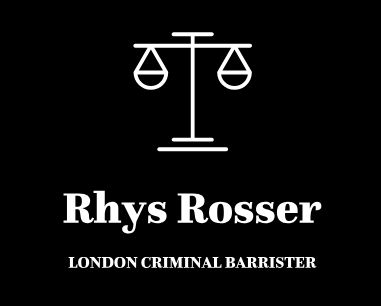Sentencing Guidelines - An Introduction
Sentencing Guidelines are drafted by the Sentencing Council, a body which was set up in April 2010, Judges and magistrates must follow the guidelines issued by the Sentencing Council ‘unless the Court is satisfied that it would be contrary to the interests of justice to do so’.

Sentencing guidelines play a crucial role in ensuring consistency and fairness in the judicial system. They provide a structured approach for judges and magistrates when determining appropriate sentences for offenders.
There are a number of factors which must be considered as part of the sentencing guidelines:
- The severity of the offence and the maximum sentence that can be imposed;
- The culpability of the offender;
- The harm caused by the offence;
- Any aggravating and mitigating features.
Judges and magistrates must follow sentencing guidelines unless doing so would be contrary to the interests of justice. The guidelines provide a range of sentencing options, from fines and community orders to custodial sentences. They also help courts determine whether a sentence should be suspended or served immediately. For example, drugs supply offences can vary significantly—from a minor altercation to a violent attack causing serious injury. Sentencing guidelines help courts assess the severity of each case and impose an appropriate sentence.
There are three types of guideline that Judges and Magistrates have to follow:
- Offence-specific guidelines: These apply to particular crimes, such as theft, assault, or drug offences;
- Overarching guidelines: These provide general principles for sentencing, such as guidelines for sentencing children and young people. These guidelines include the approach to credit for guilty plea, totality and whether a custodial sentence can be suspended;
- General guideline: Used when no specific sentencing guideline exists for an offence.
The Approach to Sentence
Judges and Magistrates will often approach a sentencing exercise in the following order:
- Determine the applicable sentencing guidelines:
- This will be the offence specific guideline e.g. supply of drugs.
- Make a finding as to the categorisation of harm:
- This may be the harm suffered by the victim;
- It can also relate to the quantity of the crime which has been committed e.g. quantity of drugs supplied / money laundered
- Decide the level of culpability
- This will involve determining how involved an offender was and how sophisticated the offence was;
- This may also involve considering how serious the offence was e.g. whether there was a weapon involved.
- Consider the aggravating and mitigating features
- This includes considering the individual's personal circumstances and whether they have any previous convictions;
- There are statutory aggravating and mitigating features for many offences and these must be considered.
- Apply any statutory reduction
- If a defendant pleaded guilty, they could be entitled to a one third reduction;
- This may include totality where there are a large number of offences.
- Consider whether the sentence, if custodial, can be suspended and if so what requirements should be added.
- This involves considering the imposition guidelines and whether to obtain a pre-sentence report from probation, if one has not already been obtained.
Imposition Guidelines
There has been a great deal of discussion recently regarding changes made to what are known as the imposition guidelines (the guidelines which assist in deciding whether a sentence should be served in prison or in the community). On April 1, 2025, the Sentencing Council intended to publish a revised guideline on imposing community and custodial sentences, emphasising pre-sentence reports (PSRs) and tailored sentencing. These proposed guidelines suggested that where offenders were from certain ethnic minority backgrounds or had certain characteristics, there was a particular need for a pre-sentence report. The Justice Secretary disagreed with this approach claiming it would lead to two-tier justice, as a result of this the changes have been delayed. The tests under the imposition guidelines remain the same.
A Judge or Magistrate when applying the imposition guidelines will balance the factors which require a sentence of imprisonment and those which suggest a community sentence would be appropriate.
Factors requiring a prison sentence:
- Offender presents a risk to any person
- The seriousness of the offence means that appropriate punishment can only be achieved by immediate custody
- History of poor compliance with court orders AND unlikely to comply in the future
Factors supporting a sentence in the community:
- Realistic prospect of rehabilitation in the community
- Offender does not present high risk of reoffending or harm
- Strong personal mitigation
- Immediate custody will result in significant harmful impact upon others, including any dependent children or where the offender is pregnant or postnatal (has given birth in the previous 12 months)
Fill in the Below to Contact Rhys and to obtain legal advice










